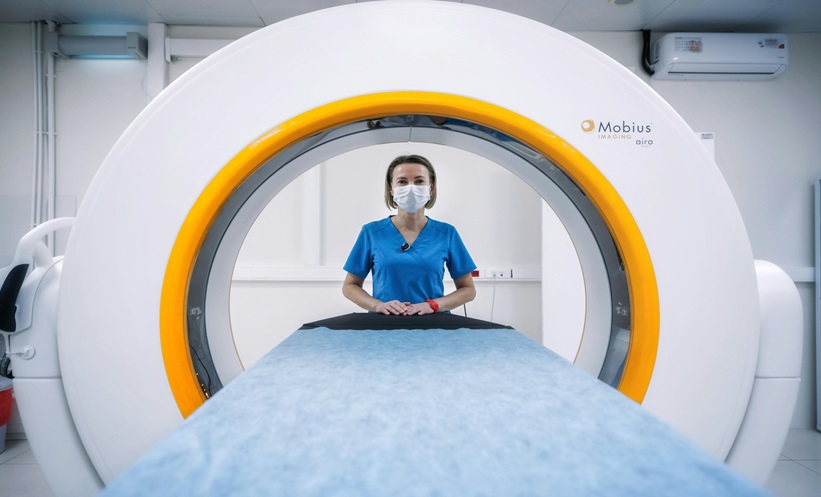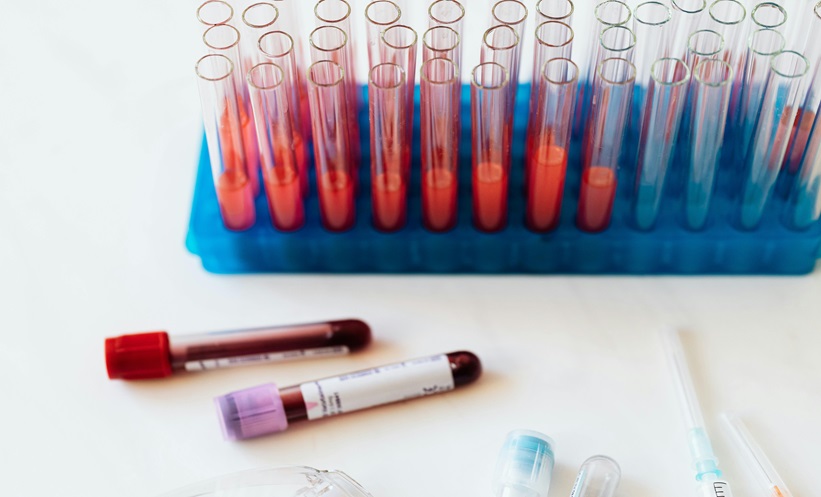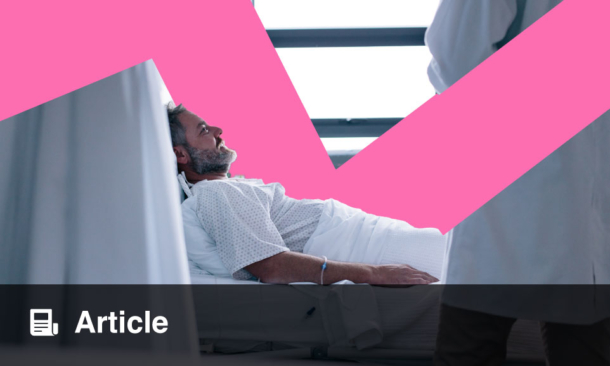DENVER, Colorado, USA, was the backdrop for the 2024 American Academy of Neurology (AAN) Annual Meeting. Coined as the Mile High City, sitting at 5,280 feet above sea level, it posed as the perfect setting to host an event for an academy with the mountainous mission of promoting brain health for all.
With a combined in-person and online attendance of 10,575 neurology professionals, the meeting spanned 6 days, included >500 programs, and had representation from 105 countries. This year, attendees were offered the opportunity to step outside of traditional educational sessions into hubs, for a unique way to learn and network. These hubs covered a variety of topics, from academics and innovation to leadership and wellness.
Hope O’Brien, Vice Chair of the AAN Meeting Management Committee, expressed excitement to welcome all attendees to the 76ᵗʰ AAN Annual Meeting and drew attention to several new additions to this year’s meeting, including the Educator’s Room where delegates could network and attend courses, childcare, hydration stations, and the Leadership Little Library, stocked with books recommended by leadership alumni.
In the official Welcome, O’Brien highlighted the Society Spotlight sessions, which showcased top abstracts from subspecialty meetings, and drew attention to the daily Plenary sessions, which featured presentations from neurology leaders on the latest and greatest in the field, including breakthrough research and controversial issues.
The Presidential Plenary Session, which took place on Day 2 and was hosted by the 2024 AAN President, Carlayne E. Jackson, was packed with delegates excited to hear from experts in the Presidential Lecture and the winners of the George C. Cotzias Lecture: Maiken Nedergaard, Center for Translational Neuromedicine, University of Copenhagen, Denmark; the Sidney Carter Award in Child Neurology: Susan J. Hayflick, Oregon Health and Science University, Portland, USA; and the Robert Wartenberg Lecture: Mark Hallett, National Institute of Neurological Disorders and Stroke, National Institutes of Health (NIH), Bethesda, Maryland, USA.
Jackson kicked off the Presidential Plenary by giving recognition to the select members who have been invited to become AAN Fellows in recognition of their outstanding achievements and contributions to the field of neurology. Before displaying the names of newly invited AAN Fellows on the screen, Jackson commended the new members, commenting: “We celebrate their remarkable accomplishments and commitment to excellence in neurology.”
Jackson further commended those who have been dedicated AAN members for >50 years, contributing a profound legacy of service and excellence. She reflected that these individuals embody core values of the AAN, and have demonstrated unwavering dedication to patient care, education, research, and advocacy throughout their distinguished careers.
Subsequently, Jackson bestowed the 2024 AAN President’s Award to Ann Tilton, Chair of the Meeting Management Committee. Jackson spotlighted Tilton’s dedication to the AAN, having been a member for 43 years. Zoning in on her recent work with the Meeting Management Committee, Jackson emphasized how instrumental Tilton has been in the reimaging of the program following emergence from the COVID-19 pandemic. After joining the stage, Tilton discussed how rewarding it has been to watch sections expand, see members get a voice in their areas of interest, and be involved in the development of strategy and direction, before thanking the AAN for the incredible honor and imploring the audience to “take advantage of the exceptional people around you and enjoy them, because every minute is a privilege.”
Jackson also referenced the AAN’s new 5-year strategic plan and updated mission statement to enhance member career fulfilment and promote brain health for all, before welcoming Natalia Rost, AAN President Elect, to the stage for the 2024 Annual Meeting Presidential Lecture. This lecture saw Sanjay Gupta, Associate Professor of Neurosurgery at Emory University Hospital, Atlanta, Georgia, USA, reflect on his journey and the brain health revolution.
When discussing some of the lessons learned over his career, Gupta commented that the stories clinicians come across are “the stories of humanity”, and highlighted the impact these have on people outside of the profession. He also stressed the need for clinicians to find the balance between uncertainty and providing patients with useful information.
Rost highlighted that we are currently amid the brain health revolution, and Gupta discussed how brain health is much more than just the absence of brain disease. He touched on the fact that we live in more of a sick care than health care system, and utilizing brain health as an example, he stated that brain maladies are only treated once a problem has occurred. He further suggested that moving forwards, preventive neurologist input could be a meaningful way to intervene before problems arise.
Gupta discussed that the mechanistic understanding of how the brain functions has been one of the main challenges in getting the public focused on brain health, noting that as our understanding has improved, the perception that we can do something about it is now changing. Moving forward, improved research and translation of this research to the bedside will require funding, advocacy, and careful messaging about what someone with good brain health looks like and how their life will be better with improved brain health, both acutely and in the long term. Furthermore, in keeping with the AAN belief in brain health for all, Gupta stressed the importance of looking at brain health universally and the relevance of research to the broader population. He poignantly stated: “We have to be voices for the voiceless. We have to be able to tell a more complete story.”
This section of the Presidential Lecture also discussed sleep as one of the five pillars of brain health. The trio discussed that to inject meaningful change into primary and neurological care, clinicians need to emphasize that healthy sleep can reduce cognitive decline and stroke risk, explaining the ‘why’ and the ‘how’. The section concluded with Jackson thanking Gupta and highlighting how his thoughts will resonate with members as the AAN moves forward with their mission towards brain health.
Building on the importance of sleep, Paul George, AAN Science Committee Chair, joined the stage to introduce the recipient of the George C. Cotzias Lecture for excellence in neuroscience, Nedergaard, for her work on the glymphatic system.
Nedergaard emphasized that “lack of sleep changes focus, judgement, and mental state,” highlighting that several studies have recently shown that subjects who have ≤6 hours of sleep per night have an approximately 30% increased risk of developing dementia as they age.
Exploring why the brain is exquisitely sensitive to sleep deprivation, Nedergaard’s team hypothesized that sleep fulfils an essential function that cannot occur in the awake state. Interestingly, compared to all other organs, the brain lacks a lymphatic system despite being a metabolically active tissue. Detailing the findings from research so far, Nedergaard discussed how the glymphatic system was uncovered, its function in CSF recirculation and clearance of proteins such as β-amyloid and tau, how it is affected by aging, and how its activity is suppressed in the awake state.
Exploring research reviewing sleep deprivation, findings showed that the human glymphatic system is affected by sleep deprivation with the effect of reduced clearance activity still present after 48 hours. Nedergaard noted that studies now suggest it may take days to weeks for the brain to recover from one night of sleep deprivation. Furthermore, she displayed research that has shown the vascular system drives the glymphatic system, stressing that reduced flow leads to increased protein aggregation and neuroinflammation, leading to neurodegeneration and subsequently, dementia. In reference to research showing that glymphatic failure is the common final path to dementia, Nedergaard highlighted that several factors, including sedentary lifestyle, aging, and reduced sleep quality, impact the function of the glymphatic system. However, there is the possibility for intervention here. If these factors are addressed earlier by increasing activity and improving sleep, onset of dementia could be delayed. Nedergaard concluded her insightful and highly topical lecture by stating that sleep is non-negotiable and that the brain is uniquely sensitive to a healthy cardiovascular system.
The AAN 2024 Annual Meeting was a hub of activity, cutting-edge research, and inspiring collaboration. We look forward to participating in the 77th AAN Annual Meeting, which will take place in San Diego, California, USA, April 5–9, 2025. For now, read on for further scientific insights from 2024’s Annual Meeting.
Novel Treatment for Niemann-Pick Disease Type C
NEIMANN-PICK disease Type C (NPC) is a slow-progressing, ultimately fatal genetic lysosomal disorder characterized by inability to adequately transport lipids, such as cholesterol. This results in the accumulation of fatty material around tissues, causing increasing damage to these areas and, accordingly, progressive deterioration of functionality.
The extreme burden of disease, and premature mortality, associated with NPC makes it a significant health concern. Despite its gravity, there are, as yet, no effective treatments for NPC, with the course of medication only extending so far as to alleviate symptoms and improve quality of life.
A recent clinical trial conducted by Michael Strupp, Department of Neurology, Ludwig Maximilians University, Munich, Germany, and colleagues, puts forth a novel therapy in the form of the active L-enantiomer N-acetyl-L-leucine (NALL), for pediatric (≥4 years) and adult patients alike. Data were presented at the 2024 AAN Annual Meeting.
The trial in question was a Phase III, double-blind, randomized, placebo-controlled crossover trial with 53 subjects randomly assigned (1:1) to receive orally-administered NALL three times a day, or a placebo, over two consecutive 12-week periods. Of the results presented, one of the most profound findings was a significant improvement to muscle control in the limbs, measured according to the Scale for the Assessment and Rating of Ataxia (SARA). Where ataxia is a prominent feature of NPC, patients treated with NALL saw a 1.97 SARA change from baseline, compared to 0.60 SARA change from baseline in the placebo cohort.
NPC is not the sole condition to benefit from the administration of NALL. As an extension of this trial, Strupp and team sought to evaluate the efficacy of NALL in the treatment of gangliosidosis, a progressive genetic disorder that destroys neurons of the brain and spinal cord. Promisingly, NALL was shown to produce similar treatment outcomes as in NPC.
Of note, none of the participants suffered any serious adverse effects, and the frequency of adverse effects between the experimental and placebo groups were comparable.
Efgartigimod in Patients with Chronic Inflammatory Demyelinating Polyneuropathy
RECENT developments of the ADHERE trial were presented at the 2024 Annual Meeting of the AAN, which took place April 13–18 in Denver, Colorado, USA.
Jeffrey A. Allen, Department of Neurology, University of Minnesota, Minneapolis, USA, opened his discussion with a summary of what chronic inflammatory demyelinating polyneuropathy (CIDP) is, the current treatment options available, and the promise of the ADHERE trial. CIDP is an autoimmune, inflammatory condition characterized by distal/proximal weakness and sensory deficits. Common treatments include corticosteroids, intravenous immunoglobulin, and subcutaneous immunoglobulin or plasma exchanges. Whilst these treatment options are effective, they carry a significant treatment burden, such as the frequency and duration of infusions, dependency on donors, and residual neurological impairment and disability.
Evidence supports the role of pathogenesis IgGs in the pathogenesis of CIDP. Efgartigimod is a human IgG1Fc fragment that outcompetes endogenous IgG, preventing recycling, and promoting lysosomal degradation of IgG, without impacting IgG production. Based on this, efgartigimod PH20 subcutaneous (SC) was developed, a coformulation of efgartigimod and recombinant human hyaluronidase PH20, which, as explained by Allen, “allows for rapid (30–90s single injection) SC administration of larger volumes.”
ADHERE is a multicenter, multi-stage, randomized-withdrawal, double-blinded, placebo-controlled trial of efgartigimod in CIDP. Notably, the trial showed that regardless of prior CIDP therapy, participants treated with efgartigimod PH20 SC demonstrated considerable clinical benefits, with evidence of rapid clinical improvement, maintained clinical response to treatment, and a 61% reduced risk of relapse compared with placebo.
Looking to the future, Allen highlighted the potential of a single, rapid (30–90s) injection of weekly efgartigimod PH20 SC as a therapeutic option to reduce treatment burden in patients with CIPD.
Positive Results of AXS-05 Efficacy and Safety in Alzheimer’s Disease Agitation
NEW findings from the ACCORD study have revealed that AXS-05 significantly delayed time to and prevented relapse of Alzheimer’s disease-related agitation (AD agitation). The results from this study were presented at the 76ᵗʰ AAN Annual Meeting.
AD agitation is a common disease phenotype, reported in up to 70% of patients with AD and characterized by emotional distress, aggressive behaviors, and disruptive irritability. The increased caregiver burden, accelerated cognitive decline, earlier institutionalization, and increased mortality, in conjunction with the limited efficacy of first-line therapy treatments for AD agitation, highlight the need for effective pharmacological alternatives.
AXS-05, a novel oral N-methyl-D-aspartate receptor antagonist, was demonstrated to rapidly, substantially, and significantly improve AD agitation in the ADVANCE-1 study, as measured by the Cohen-Mansfield Agitation Inventory (CMAI) score.
The ACCORD study was a double-blind, placebo-controlled, multi-center, randomized discontinuation study designed to assess the efficacy and safety of AXS-05. The study was divided into two phases: an open-label and a double-blind period. A total of 178 study participants with probable AD and clinically significant agitation were treated with AXS-05 for up to 9 weeks until a sustained clinical response was observed, defined as a 30% or more significant reduction in CMAI score. In the double-blind phase, the study organizers implemented a 1:1 randomization of the 108 sustained clinical responders between a placebo and AXS-05 group. The double-blind phase extended for up to 26 weeks or until an agitation relapse.
Results from Phase III of the ACCORD trial showed an early and rapid reduction in CMAI score in the open-label phase, statistically significant from entry CMAI, with 80% of participants recognized as clinical responders by Week 6. The double-blind phase revealed that participants receiving AXS-05 had a significantly delayed time and decreased risk of agitation relapse, with the risk of relapse 3.6-fold lower with AXS-05 compared with placebo. Furthermore, AXS-05 was well tolerated, generally safe, and not found to be associated with cognitive impairments or significant adverse events.
The safety results and clinically meaningful improvements in AD agitation led Anton Porsteinsson, director of the Alzheimer’s Disease Care, Research and Education Program at University of Rochester, New York, USA, to conclude that AXS-05 has the potential “to fulfill a high unmet need for the pharmacological treatment of AD agitation.”
Does Dexamethasone Improve Outcomes in Herpes Simplex Virus Encephalitis?
RESULTS from a randomized controlled trial assessing the effect of the corticosteroid dexamethasone on herpes simplex virus (HSV) encephalitis outcomes were presented at the 2024 AAN Meeting, held in Denver, Colorado, USA.
Tom Solomon, Walton Centre NHS Foundation Trust, Liverpool, UK, and colleagues, enrolled a total of 94 patients (aged >16 years) with HSV encephalitis, confirmed by cerebrospinal fluid (CSF) PCR, in the trial, and randomized participants 1:1 to an intervention group or control group. The intervention group (n=47; mean age: 64 years; 43% female; 87% HSV-1) was allocated to intravenous dexamethasone 40 mg every 24 hours for 4 consecutive days, and standard care. The control group (n=47; mean age: 67 years; 51% female; 100% HSV-1) were allocated to no drug, and standard care. The primary outcome was an improvement in auditory memory, as determined by the Weschler Memory Scale IV (WMS-IV) assessed at 6 months. Auditory memory is consistently impaired in HSV encephalitis, and often the most severely impaired domain. At Days 1–7, baseline data and baseline biomarker samples were collected, and daily Glasgow Coma Scale (GCS) was measured. At Day 14, a repeat MRI brain scan was performed, as well as a repeat CSF examination for HSV PCR as a safety outcome.
The team found no significant difference in the WMS-IV Auditory Memory Index between the dexamethasone group (mean: 71; standard deviation: 26) and control group (mean: 69; standard deviation: 25; P=0.756). Furthermore, secondary neuropsychological outcomes, such as WMS-IV Visual Memory Index, Immediate Memory Index, and Delayed Memory Index, were not significantly different between the two groups. There was also no difference in MRI scan results at Day 14, with similar percentage changes of total edema, cytotoxic edema, and vasogenic edema between the two groups. Finally, results from the safety outcome showed no increase in detectable HSV in CSF at 2 weeks in the dexamethasone group compared to the control group.
The authors stated that a higher dose of dexamethasone, closer to the dose used for inflammatory disease, or earlier administration, could perhaps have affected patient outcomes, but further research will be required. However, complete lack of signal across any of the parameters suggests that dexamethasone does not improve patient outcomes.
Embolization of the Middle Meningeal Artery to Treat Subdural Hematoma
NEW research conducted by Jason Davies, State University of New York, Buffalo, USA, and colleagues, indicates that embolization of the middle meningeal artery (MMA) with a liquid embolic agent reduces the recurrence rate of subacute and chronic subdural hematomas in elderly patients following surgical operation. These data were presented at the 2024 AAN Annual Meeting.
Subdural hematoma (SDH) is a serious and urgent medical condition that requires emergency surgery, most typically a craniotomy or burr hole surgery. Old age and consumption of anticoagulant medications are risk factors for SDH, and thereby informed the inclusion criteria of this trial.
As one of the most common neurosurgical diseases, with increasing prevalence correlated with an increasing average life expectancy, SDH represents a prominent and growing health concern. Indeed, by 2030, it is estimated that SDH will become the most common neurosurgical disease. Furthermore, SDH has a recurrence rate between 12–20% up to 90 days post-surgery, indicating the necessity of effective recurrence prevention.
In their prospective cohort study, Davies and team evaluated the safety and effectiveness of MMA embolization with a liquid embolic agent in an elderly cohort. The experimental and control arms of the study were divided into those treated with liquid embolic agent alongside standard surgical management, and those treated solely with standard surgical management, respectively. Homogeneity between the two groups at baseline was extensive, though the prominence of male candidates in both groups (72.6% and 73.4%, respectively) may limit generalizability of the data.
Overall, the results indicated a three-fold reduction in recurrence requiring surgical intervention in the experimental cohort compared to the control cohort (4.1% versus 11.3%; risk ratio: 0.36; p=0.0081). Davies and team highlighted the potential under-representation of this effect due to confounding factors. Some members of the experimental arm were ineligible for treatment with liquid embolic agent on account of dangerous anatomical variants, and three members of the control arm were embolized outside of trial protocol.
Of the experimental cohort, 15.7% experienced serious adverse events (SAE) up to 30 days following embolization and surgery, but none experienced any SAEs related to use of the liquid embolic agent. This figure was greater in the control group, with 21.7% recording SAEs post-surgery. All neurological deaths up to 90 days post-operation were related to SDH alone. Notably, some of the SAEs observed are typical in elderly patients following neurosurgery, although the balance of SAEs attributable to this effect versus the operation itself is unclear.







